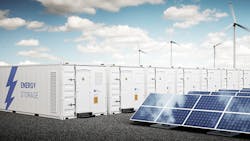The increasing of Renewable Energy Source (RES) generation requires power systems to become more flexible, in order to manage injections variability and uncertainty at various timeframes. Energy storage systems, such as electrochemical technologies, represent a broadly deployable asset, which could support effectively RES deployment.
Electricity is a remarkable and environmentally friendly form of energy that is safe and easy to use. However, one fundamental concept learned by aspiring engineers is that electricity itself cannot be stored; it must be converted into other storable forms of energy and later reconverted back into electricity when needed. While electricity can be transmitted quickly, reaching even the most remote locations within milliseconds, it requires a delicate balance and synchronization between generation and consumption. In the past decade, these two factors have sparked a significant debate about the integration of energy storage technologies with electricity, as the resilience of the anticipated "Electricity Age" will depend on them.
Pumped storage hydropower plants have long been critical resources for the electric system, capable of absorbing and releasing large amounts of energy as needed. Previously, only a few customers who required uninterrupted power supply installed independent storage or power units on their premises, despite their inefficiency, as a workaround for issues with the electric grid. However, with the rise of renewable energy sources, which align with climate change mitigation strategies but are often small-scale, uncontrollable, and distributed across different areas, the energy landscape has undergone a dramatic shift. This shift has brought forth both new threats and opportunities. The rapid expansion of energy storage systems has become crucial to address the hour-to-hour variability of wind and solar power plants.
In this context of impressive growth, KEMA Labs – the CESI Group division specializing in Testing, Inspection, and Certification - houses advanced battery testing laboratories. These laboratories offer a unique opportunity to gain valuable experience and knowledge in the field of battery components. The laboratories are equipped with all the necessary instruments to perform battery testing, by guaranteeing a controlled environment, allowing the monitoring of the tests even remotely and providing a database to store the records of all the results for later use and analysis.
Climatic chambers, equipped with safety devices to mitigate risks associated to lithium battery operation, are used to reproduce the environmental conditions, regulating both temperatures, from -35°C to 180°C, and humidity, from 10 to 98%; while different type of cyclers, whose design follows the principle of modularity, are used to impose charge and discharge currents on the battery cells, modules and packs. Several independent channels can be combined to obtain currents even very high, up to 1200 A, for cells and power up to 200 MW for modules and packs.
Sponsored by:

